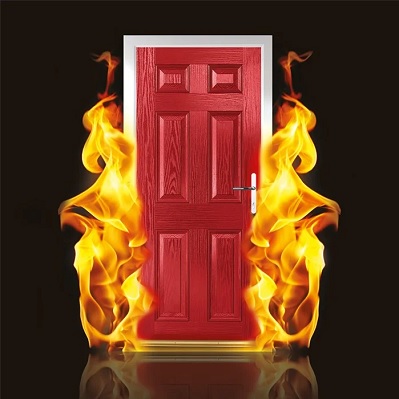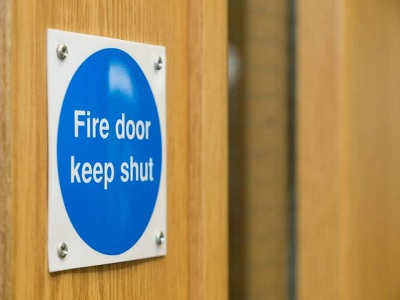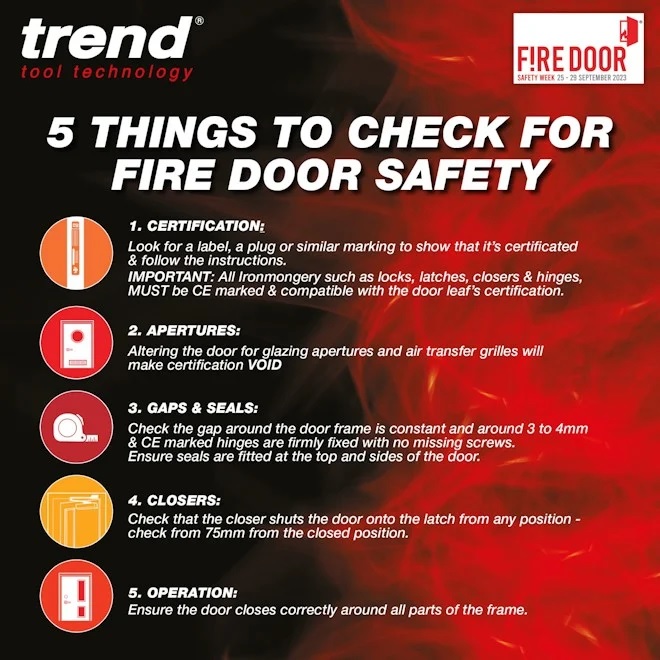✔ Competitive Pricing ✔ Quality Service ✔ Extensive Stock ✔ Experienced Staff
 Price
PriceWhy are Fire Doors So Important?
Why are Fire Doors so Important?
Most of us are only made aware of the danger of fire from headline disasters and yet, in the year ending March 2022, fire response teams attended 152,608 fires in the UK (a 1% increase compared with the previous year). There were 272 fire-related fatalities in the year ending March 2022 compared with 237 in the previous year.
The average total response time to primary fires was 8 minutes and 50 seconds: an increase of 15 seconds since the previous. The average total response time to secondary fires was 9 minutes and 13 seconds.
Fire doors play a fundamental role in these scenarios and are rigorously constructed and tested to British Standards BS 476: Part 22 or BS EN 1634-1 to ensure they remain fire resistant for a minimum of 30 minutes (FD30) or 60 minutes (FD60) – holding out long enough to cover response times and evacuation. Fire door hardware is also meticulously designed to comply with UK Construction Products Regulations and is tested under BS EN 1154, BS EN 1155 and BS EN 1634 standards and CE marked. After all, without functioning hardware, a fire door is rendered useless.
However, danger commonly lies where fire door safety is misunderstood. Especially when you consider that last year alone, for local authorities, a staggering 65% of 26,318 planned fire door maintenance and replacement phases did not progress as scheduled – leaving doors neglected and buildings vulnerable.
Sourced from: National statistics - Fire and rescue incident statistics: England, year ending March 2022 & The British Woodworking Federation Group.

Closing the Gap
It’s crucial to understand the factors that ensure a fire door performs as intended – product manufacture, quality, installation and maintenance all play a part. Their correct specification, maintenance and management can be the difference between life and death for building occupants, as can their use. Propping a fire door open means that they won’t perform as they should in the event of a fire.
Everyone plays their part in ensuring a fire door performs as it should, from the manufacturer through to the building users, and this is why the annual Fire Door Safety Week campaign exists.
We know that security and safety are high on the agenda for homeowners and renters however, fire safety is considered less of a priority. In fact, people are six times more likely to report a heating system issue than a fire door one, and people are twice as likely to report a toilet not flushing or no hot water than a fire door issue. Fire Door Safety Week aims to raise the awareness of the critical role that fire doors play in saving lives and protecting property in the unfortunate event of a fire. Make Time to Save Lives.

Five Simple Steps
Whether you are the building's owner, manager, landlord, occupier, or contractor hired to hang doors, you can help keep everyone safe. It only takes five simple steps:
- Check Certification labels and markings
- Check Apertures don't void certification
- Check the Gaps & Seals around door frame
- Check the Closers from any position
- Check the Operation of the door

Anatomy of a Fire Door
The difference between an effective and ineffective fire door is literally life or death. They are designed to give people the time they need to make it to safety.
Fire doors are rigorously constructed and tested to British Standards BS 476: Part 22 or BS EN 1634-1 to ensure they remain fire resistant for a minimum of 30 minutes (FD30) or 60 minutes (FD60), holding out long enough to cover response times and evacuation.
1. Latch / Lock: When fitted, the latch or lock engages the dooor leaf securely to the frame when the door is in the closed position. It is critical in securing the door in the event of a fire. Find Fire Door Latch and Lock Fitting Solutions here.
2. Intumescent Seals / Smoke Seals: Intumescent seals can be located in the door edge or frame. They expand when heated by a fire and seal the gap between door and frame, stopping the passage of the fire. Smoke seals can be combined with intumescent seals or fitted separately, they are located in the perimeter of the frame or door edge and can act as either wiper or compression seals to restrict the flow of smoke. Find Intumescent / Smoke Seal Solutions here.
3. Door / Frame: The fire door leaf is the main component of the doorset or door assembly and is usually manufactured to a range of standard sizes and door styles. The frame's design, size, fixings and material are critical to the fire performance and fire rating. Find Fire Door and Frame Fitting Solutions here.
4. Hinges: A minimum of 3 fire rated hinges must be used, located correctly and fitted with using appropriate fixings and intumescent pads and strips, when required. Find Fire Door Hinge Fitting Solutions here.
See the full range of Fire Door Solutions





 01726 828 388
01726 828 388






